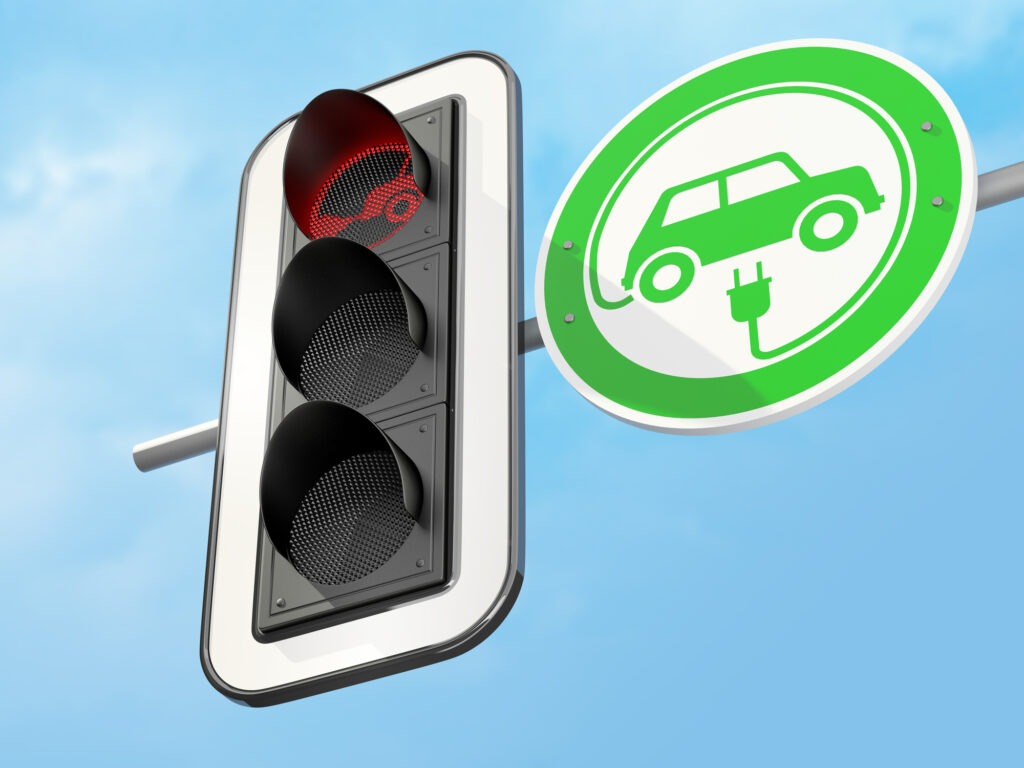European new-car buyers shun plug-in hybrids for fully-electric models
15 November 2022

The demise of the internal-combustion engine (ICE) continues in Europe’s new-car market, especially for diesel cars, but plug-in hybrids (PHEVs) are losing ground too as buyers embrace fully-electric models. For consumers not ready to switch to battery-electric vehicles (BEVs), hybrid-electric vehicles (HEVs) offer a popular route to automotive electrification.
The latest figures from the European Automobile Manufacturers’ Association (ACEA) show that in the first three quarters of 2022, registrations of new petrol-powered cars fell 16.9% year on year in Europe. This encompasses the EU, the UK, and the European Free Trade Association (EFTA) markets of Iceland, Norway, and Switzerland. As the total new-car market contracted by roughly 10%, the petrol share receded to 38.3% from 40.4% in full-year 2021. However, petrol does remain the leading fuel type in the region.
Unsurprisingly, diesel is disappearing far more quickly, with registrations down 25.6% year on year between January and September 2022. Accordingly, the diesel share has dropped to 15.2%, down from 17.6% in 2021. This means ICE-powered vehicles commanded a 53.5% share thus far in 2022, compared to 58% in 2021. ICE is perilously close to accounting for less than 50% of the European new-car market, a far cry from almost 90% only three years ago.
HEVs nudge 25%
While petrol was initially seen as the most viable alternative to diesel in the wake of the Dieselgate scandal, this is no longer the case.
Hybrid technology offers the same flexibility as ICE, with additional electric power lowering emissions and fuel consumption. Furthermore, range and charging anxiety are rapidly diminishing, but not everyone has easy access to charging facilities - whether in public, at home, or at work. Standard hybrids therefore serve as a stepping stone to plug-in vehicles, and became the second most popular powertrain in 2021, overtaking diesel.
HEVs are also benefitting from a proven track record, which now spans more than a decade, and more manufacturers are bringing models to the market. Year-on-year registrations gained 3.5% in the first three quarters of 2022, to capture a 23.7% market share. The powertrain is coming close to accounting for one in four new cars registered in Europe and has extended its lead over diesel to 8.5 percentage points.
One in five plug in
BEV registrations enjoyed the highest growth rate of all fuel types in the first three quarters of 2022, gaining 25.8% year on year. Their market share climbed to 12.1%, up from 10.3% in 2021. Rising fuel prices, incentives, and the proliferation of models have helped their cause but European manufacturers are struggling to meet orders and so their share could have been even higher.
Registrations of new plug-in hybrids, however, declined by 11.3% year on year to September. As this was a greater fall than in the overall new-car market, the market share of PHEVs has reduced slightly to 8.3%. from 8.9% in 2021.
Nevertheless, in the first three quarters of 2022, almost 1.7 million new electric vehicles (BEVs and PHEVs) were registered, expanding 7.5% year on year. The combined share also amounted to 20.4%, up from 9.2% in 2021, meaning more than one in five new cars registered in Europe had a plug.
With lower incentives for BEVs from January 2023 in markets such as France and Germany (the latter is also terminating PHEV subsidies), a year-end surge in EV registrations would usually be expected. However, long delivery times, especially for popular European models, are curtailing this and Autovista24 envisages the full-year EV share will climb only slightly to 20.8%.
Despite the inevitable reduction in government subsidies, and higher taxes, the trend for consumers to switch to BEVs will continue. This growth will outweigh the forecast decline in the share of PHEVs, meaning the combined EV share will continue to rise.
Autovista24 forecasts that EVs will account for more than one in four European new-car registrations in 2024, even ahead of the stricter emissions targets proposed for 2025 and 2030 in the Fit-for-55 package. Moreover, the 100% carbon-emissions reduction for 2035 will see an end to the sale of new ICE and hybrid models.
Benefitting Chinese carmakers
The electrification of the European new-car market has opened the door to Chinese manufacturers, which are trying hard to build recognisable and reputable brands in the region. Aiways, BYD, DR Automobiles, Lynk & Co, Nio, and XPeng are just a handful of carmakers working to take on established leaders across the continent. These brands are also able to capitalise on the supply woes of their European counterparts and make inroads into the continent’s electrifying market.
One noticeable trend is that Chinese carmakers are gradually finding their way into European car-rental fleets. Asian brands are eager to present high-tech, quality cars that are comparable to their Western counterparts but often have a smaller price tag – an appealing combination to the vast car-rental industry, where small savings can add up to a big difference.
Sixt, for example, recently announced an agreement with one of the world’s largest EV manufacturers – China’s BYD. It ordered 100,000 electric cars from the Asian carmaker, which will deliver its models over the next six years. Sixt will be the first car-rental company in Europe to offer BYD cars, which will become available in select local markets from later this year.
According to data provided to Autovista24 by EV-volumes.com, BYD is now ranked 50th in Europe’s new-car market, with phenomenal year-on-year growth of 1381%, albeit from a low base. DR Automobiles and Lynk & Co are ranked 36th and 37th, with respective year-on-year growth of 200% and 454%.
MG has the greatest presence among Chinese carmakers in Europe and is already the 25th biggest brand in Europe’s new-car market, with further year-on-year growth of 95% in the first three quarters of this year. Attractively-priced models such as the MG5 and ZS EVs have bolstered the resurrected brand, which will benefit further from the newly launched MG4 EV.
Given the ongoing supply challenges facing European incumbents to meet demand, especially for EVs, the phenomenal growth rates of Chinese brands are expected to persist. A new report published by Strategy&, part of the accounting firm PwC, predicts that 800,000 cars produced in China could already be sold in Europe in 2025. Moreover, the report expects the region to become a net importer of cars in 2024, although this also factors in ‘the relocation of BEV production by European and American manufacturers to China.’



